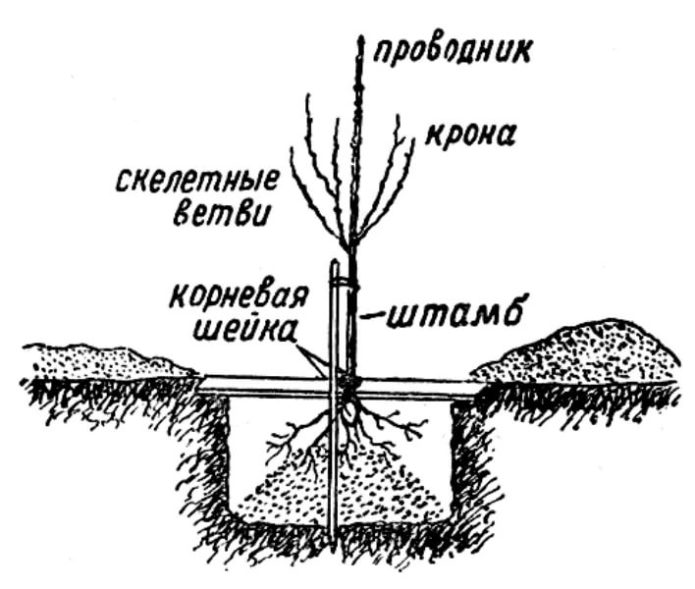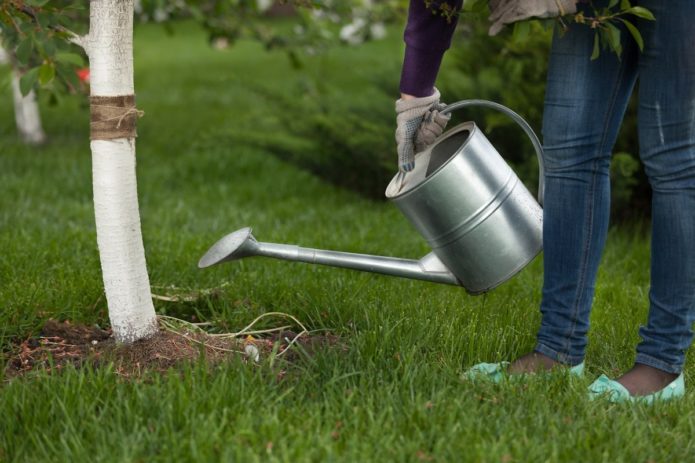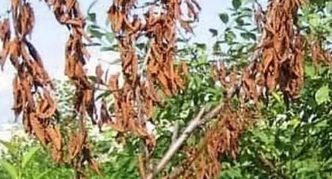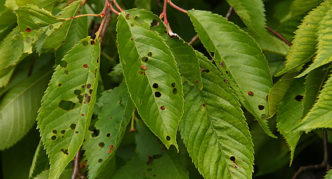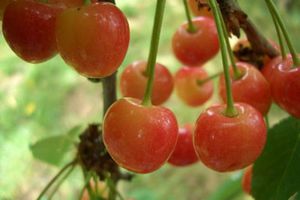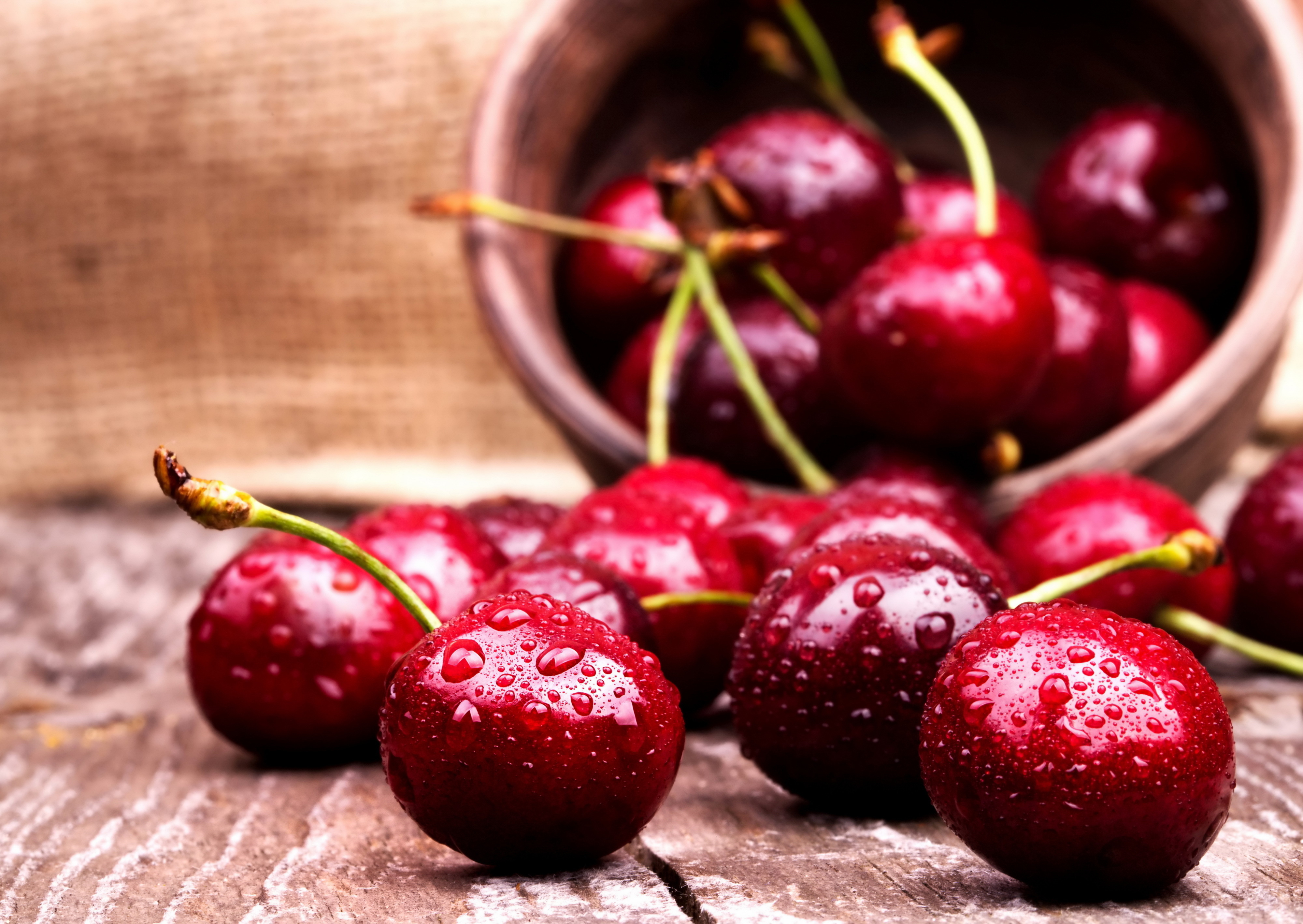Everyone knows that cherry fruits open the berry and vitamin season. They ripen quickly, delight with color, shape and taste. One problem: all good things tend to end quickly. And in order to stretch the pleasure, they came up with a late variety of Bryanochka cherries. Rich, dark, full of summer heat and honey sweetness, berries complete the cherry season, giving way to others.
Content
The history of the origin of the variety Bryanochka
Cherry variety Bryanochka is still very young. Included in the State Register for the Central Region in 2009. Its authors: Maina Vladimirovna Kanshina, Zueva Lidia Ivanovna and Alexey Alexandrovich Astakhov.
Much work with cherries has been carried out in recent years by M.V. Kanshin and A.A. Astakhov are breeders of the All-Russian Scientific Research Institute of Lupine near Bryansk. Based on more than 40 of the most hardy samples they have selected, they have created new varieties.
Many modern cherry varieties owe their existence to the creative spirit of Maina Vladimirovna.
As a result of many years of breeding work by Maina Vladimirovna and her small team, highly productive and winter-hardy varieties of sweet cherry have been created ... At present, there are more than 30 of them in the Central and Central Black Earth region - Ovstuzhenka, Odrinka, Symphony, Raditsa, Tyutchevka, Teremoshka, Revna, Veda, Bryanochka , Astakhov's favorite, Astakhov's memory, Lena, Krasnaya Gorka and others.
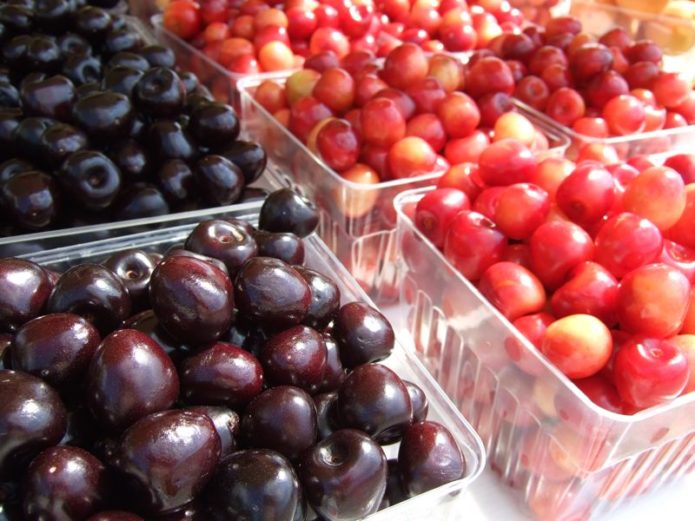
Thanks to the painstaking work of Russian breeders, today the inhabitants of our country have the opportunity to feast on various varieties of cherries
Description of cherries
Sweet cherry Bryanochka is characterized by intensive growth, while not stretching, medium-sized. Crohn's rare, pyramidal shape. Shoots are straight, vegetative and generative buds are elongated, large, slightly deviated from the shoot. The base of the leaf is narrow, the apex is strongly narrowed. The leaf itself is oblong-oval in shape, flat with jagged edges. At the base of the leaf blade, there are two red glands. The corolla of the flower is white, the petals do not touch. Three flowers are collected in the inflorescences.
Fruits are leveled, weighing 5 g, large. The size of the berry is on average 21x20x19 mm. They are heart-shaped with a wide flattened base and a rounded apex. Skin color is dark red. The pulp is dark red, with a rich rich taste. The tasting score is the maximum of five possible. The stone for such a large berry is rather small, makes up less than 7% of the fruit, and is easily separated.
Sweet cherry Bryanochka blooms late and bears late fruits. Self-fertile, needs pollinators. The best pollinators for Bryanochka are cherry varieties Veda, Iput and Tyutchevka. After planting, the trees begin to bear fruit in the fourth or fifth year. The average yield is slightly less than a centner per hectare, the best yield reached 308 centners / ha.
The wood and generative buds of Bryanochka are highly frost-resistant. Resistance to diseases: moniliosis, coccomycosis, clasteriosis, average.
Features of growing and caring for Bryanochka
Due to the peculiarities of the structure, caring for cherries is not particularly difficult for gardeners and just summer residents. The tree is not sprout, it can be no more than three meters long, with a sparse crown, which makes it possible to save time on formative pruning. The frost resistance of the variety and late flowering ensure the safety of the trees and guarantee a stable harvest.
Landing
For planting, seedlings are chosen no older than one or two years. At the same time, the need for pollinators is taken into account: either they plant Bryanochka on a site where pollinating trees already grow, or they simultaneously acquire seedlings of at least two different varieties. Trees are planted at a distance of 2.5–3 m from each other. Some gardeners, in the absence of free space on the site, practice grafting several varieties of cherries on one tree. This allows you to save space on the site and get consistently good yields of berries of different varieties.
The planting of Bryanochka itself does not differ from that for other varieties. The place is chosen warm, sunny, protected from northern winds. With a close occurrence of groundwater, they are planted on a hill, providing a distance of at least one and a half to two meters. Sweet cherry prefers to grow on light fertile soils with a neutral or slightly acidic reaction of the environment. When planting on acidic soils, 3-5 kg of dolomite flour are introduced into the planting pit for deoxidation and a bucket of sand to improve the mechanical properties of the soil. Drainage is provided by introducing lime gravel to the bottom of the planting pit, which further reduces the acidity of the soil and saturates it with calcium.
For landing:
- Digging a hole 80x80x70 cm.
- The top fertile layer is separated and mixed with humus, low-lying peat or compost in a 1: 1 ratio.
- Gravel is poured onto the bottom of the pit.
- Mix the soil mixture with dolomite flour and sand, fill the hole two-thirds or more, so that when the seedling is planted, its root collar rises 5-6 cm above the soil level.
- The rest of the soil is poured, compacted, forming an irrigation hole.
- Water the seedling abundantly until the water is no longer absorbed.
- The trunk circle is mulched with dry peat to prevent water evaporation.
When planting, a planting peg must be fixed, to which a cherry seedling is tied.
Pruning
The first pruning is recommended immediately after planting. The stem is shortened to a length of up to 60–65 cm. In the future, it is necessary to maintain the natural shape of the crown, removing sick, weak, injured and shoots growing inside the crown. Pruning is recommended in clear, sunny spring weather. However, the shoots affected by diseases are removed and destroyed at any time of the year.
Video: about pruning cherries
Watering
Sweet cherries need to be watered in sufficient quantity and regularly. Do not overfill as it does not tolerate stagnant water. The easiest way to determine if the cherries need to be watered is to rake the mulch and touch the soil. If the soil around the seedling is dry, you need to water it, and 3-4 buckets are added under each tree. Then the trunk circle is mulched.
During the summer, experienced gardeners recommend covering the crown projection with freshly cut grass, which will additionally protect against moisture evaporation, suppress the growth of weeds and, gradually decomposing, feed the roots with organic matter. Regular watering will prevent cracking of the fruit, as it has been noticed that if you water the cherries with fruit set after a long period of drought, then cracks appear on the fruits. This leads to a significant deterioration in their taste and marketability. Some gardeners suggest to stop watering cherries about two weeks before harvest to avoid this kind of trouble.
Top dressing
Of course, sweet cherries love to grow on fertile soils, but when compost or humus is introduced into the planting pit for the next three to five years, the need for mineral fertilizers disappears. Summer residents have long mastered an uncomplicated effective way of feeding with nettle infusion. All cut weed nettles are not thrown away, but placed in barrels and filled with water. After a few days, the readiness is judged by a specific smell, the infusion is used for watering cherries and other fruit trees.
The method is convenient in that it allows you to keep the area free from nettles and feeds the plants with the necessary organic additives. Experienced summer residents cover the trunk circle with humus in the fall, add ash at the rate of 500 ml under each tree. If you want to apply mineral fertilizers, they are guided by the rule: apply nitrogen fertilizers only in spring. Phosphate and potash fertilizers can be applied throughout the season.
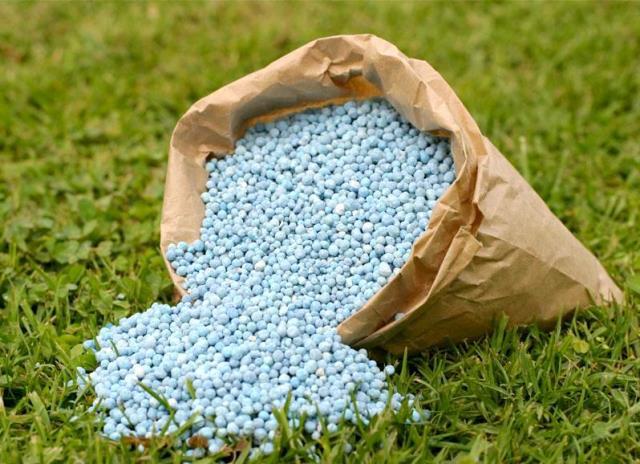
Nitrogen fertilizers should be applied only in early spring, phosphorus and potash fertilizers - 3-4 times per season
Seedling protection and disease prevention
In the first winter, young cherry seedlings are covered with corrugated cardboard or paper bags, which are not very tightly fixed in several places. This protects them not only from cold weather, but also from possible damage to trees by hares. In the future, due to the high frost resistance of the variety, the cherry is no longer covered.
To prevent the development of diseases, cherries in the spring are treated with all stone fruits on the site with a 1% solution of copper sulfate or Bordeaux liquid... All three types of lesions that can occur in the Bryanochka cherry: moniliosis, coccomycosis and clasteriosis, can be prevented by spraying with copper-containing preparations.
Additional protection for cherries will be provided by:
- Autumn digging and regular loosening of the tree trunk circle.
- Collection and destruction of volunteers, leaves, removal of affected shoots.
- Delicate pruning, without injury, with further processing of cuts with garden pitch.
- The destruction of overgrowth, regular watering and feeding, contributing to the formation of their own immunity and increasing resistance to diseases and unfavorable external factors.
Methodical control of weeds and anthills around cherry plantings will rid the trees of insect pests. To enrich the soil with nitrogenous fertilizers and improve its composition, it is recommended to plant legumes or green manures between the rows of cherries in the early years.
Photo gallery: some diseases affecting cherries
- Cherry coccomycosis is a widespread disease that strongly affects plants
- Some types of monilia fungi cause moniliosis
- Clasteriosis perforated spot is caused by fungal spores and looks like a scattering of raspberry specks on foliage up to 5 mm in size
The autumn whitewashing of the trunks and skeletal branches of sweet cherries prevents frost cracks. It is worth using it, although the wood of the Bryanochka cherry tree is resistant to frost.
Reviews
I would like to present a very good selection by M.V. Kanshina - Bryanochka. The only one of my cherries, in which the number of flowers was equal to the number of ripe fruits. Productivity, as you can see, is average, but it is compensated by unmatched winter hardiness. The tree is 3 years old. All past frosty winters fell on the young sapling and nevertheless.
About cherries. Here I can cite a piece of notes from S.A. Potapova Of the varieties, the following are recommended for the central region: Fatezh (one of the most winter-hardy), Iput (good pollinator), Bryansk pink (very winter-hardy), Chermashnaya (wood hardiness is high, but weak in the buds), Sadko, Lena (seedling of Bryansk rosvova , and tasty and winter-hardy), Odrinka, Ovstuzhenka (partially self-fertile), Bryanochka, Tyutchevka (winter-hardy). In general, cherries are less winter-hardy than cherries, and even the most reliable varieties do not match highly winter-hardy cherries.That is, if your cherry does not grow, it is all the more useless to grow cherries.
In our conditions, Bryanochka has an average berry size, the taste is also average, Iput is tastier and larger.
Summer this year is late, but is inexorably coming to an end. And on the shelves you can still find sweet cherry berries, among which the fruits of Bryanochka attract with dark red hearts.

